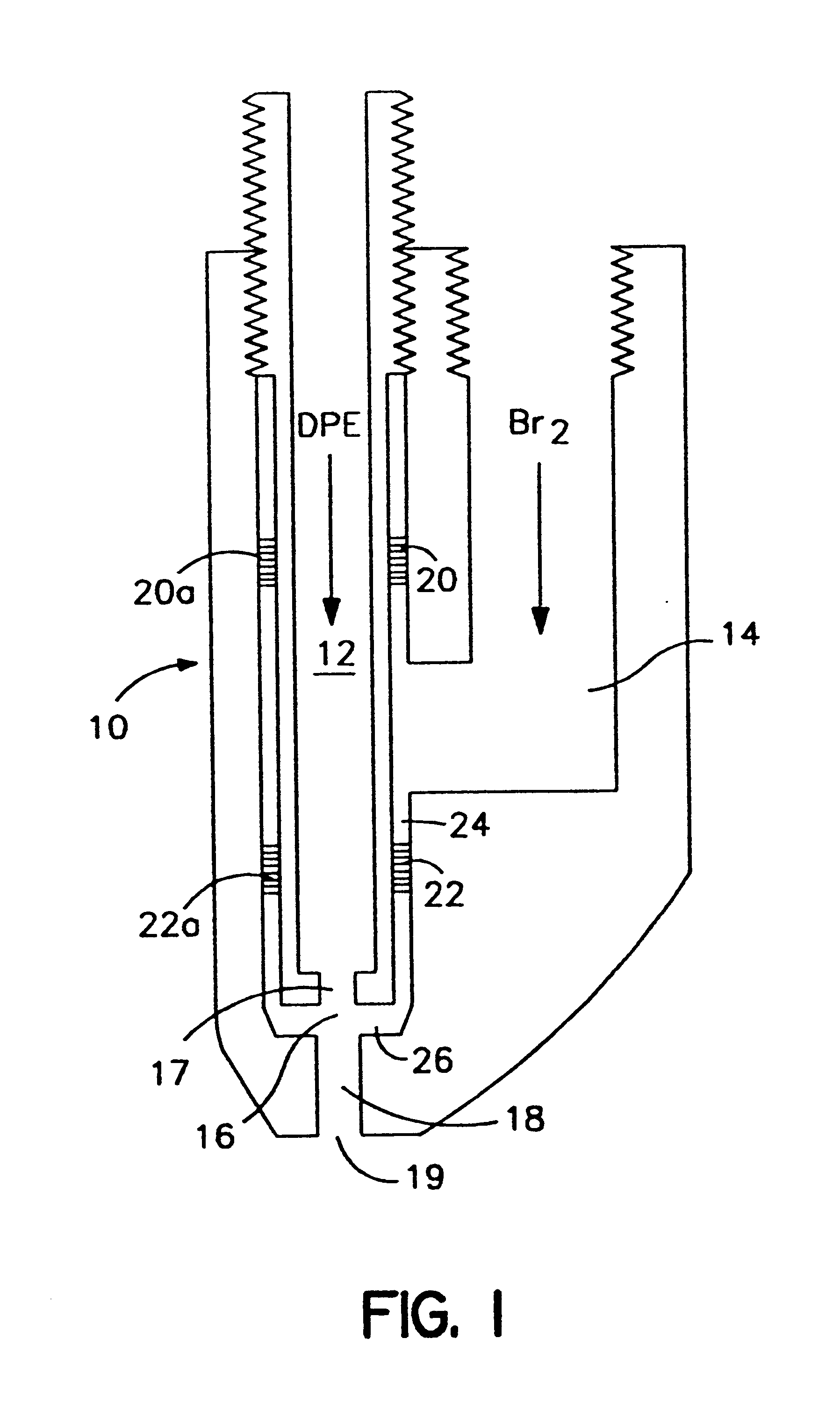Bromination process
a bromine and process technology, applied in the field of bromine extraction process, can solve the problems of cleavage, undesirable color bodies, instances, etc., and achieve the effect of reducing the content of occluded bromin
- Summary
- Abstract
- Description
- Claims
- Application Information
AI Technical Summary
Benefits of technology
Problems solved by technology
Method used
Image
Examples
Embodiment Construction
To a 15,140 L (4,000 gal) glass lined agitated reactor is added 12,712 kg (28,000 lb) of bromine. The agitator was then started and 68 kg (150 lb) AlCl.sub.3 was added. The reaction content was heated to 58.degree. C. (135.degree. F.).
Bromine flow through a mixer was established at 2,406 kg / hr (5300 lb / hr). A bromine heater was used to obtain a temperature for the bromine of between 50.degree. C. and 55.degree. C. (120.degree. F. and 130.degree. F.). Molten diphenylethane flow to the mixer was then established at 272 kg / hr (600 lb / hr).
The mixer was located at the end of a dip tube which extended to a point 60 cm (24 inches) beneath the reaction mass surface. The mixer was of the type shown ill FIG. 1 hereof. The mixer was designed to handle 272 kg / hr (600 lb / hr) diphenylethane and 2406 kg / hr (5300 lb / hr) bromine. The mixer forced the bromine radially inward into a 0.48 cm (3 / 16 inch) stream of diphenylethane. The mixer provides a mixing chamber through which the resultant intimate m...
PUM
| Property | Measurement | Unit |
|---|---|---|
| reaction volumes | aaaaa | aaaaa |
| melting point | aaaaa | aaaaa |
| temperature | aaaaa | aaaaa |
Abstract
Description
Claims
Application Information
 Login to View More
Login to View More - R&D
- Intellectual Property
- Life Sciences
- Materials
- Tech Scout
- Unparalleled Data Quality
- Higher Quality Content
- 60% Fewer Hallucinations
Browse by: Latest US Patents, China's latest patents, Technical Efficacy Thesaurus, Application Domain, Technology Topic, Popular Technical Reports.
© 2025 PatSnap. All rights reserved.Legal|Privacy policy|Modern Slavery Act Transparency Statement|Sitemap|About US| Contact US: help@patsnap.com


